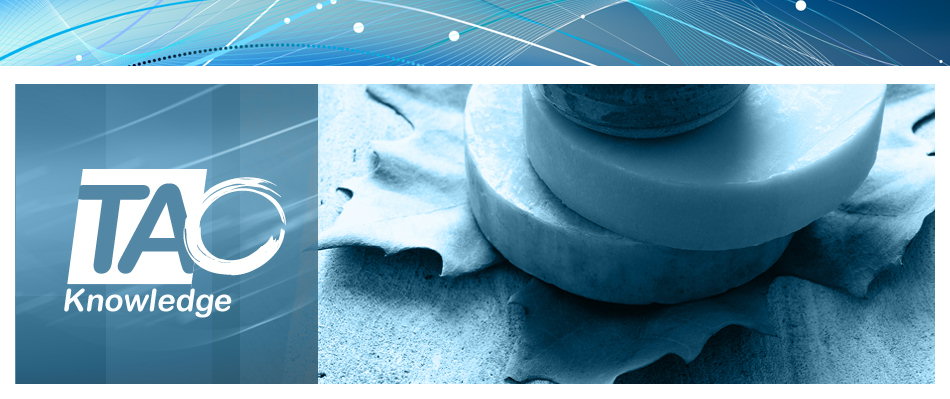
The Knowledgebase
Tao Knowledge includes our well known massive knowledgebase of Chinese medicine information. This enables the user to find quick and correct solutions for almost any health condition. The unique structure of the knowledgebase allows you to add or edit anything you need, in a clear and useful RTF style, or web links.
Tao Knowledge is using the same successful and unique database system that was developed for our most valued product Taoclinic Pro and is based on object oriented programming. This enables speedy and efficient handling of data, in addition to being highly flexible.
The database system contains the following features:
- A vast and wide-ranging store of information in all areas of Chinese Medicine.
- Active referral system among all the areas, allowing for retrieval of extensive and accurate data.
- Options for updating and adding information. Data can be edited and/or expanded as needed. Index names can be edited and their texts changed and/or expanded. New indexes can be added and incorporated with appropriate referrals.
- Unlimited indexes additions to every existing list, unlimited text for each.
Information Types
It is important to note that there are several information types available. The required type is selected from the ‘Info Type’ button at the top right. The following are the available information types options:
Types of information:
- Internal knowledgebase
- Online web info
- Web discussion groups
1. Internal knowledgebase type:
This is the most usable mode. It will present the available information of the selected item in the internal knowledgebase that is a part of the product. The internal knowledgebase is expandable and can include everything you add to it during the time you use the product.
2. Online web info type:
In this mode the information found on the web will be presented. This is created by using internal search algorithms that automatically use web search engines to locate available information. The internal search algorithm will try to locate information even if the initial search will not succeed, and at times even open two search engine pages in parallel mode to expose as much relevant information as possible. This is all done automatically and quickly, without any need for the user to do anything.
3. Web discussion groups type:
This mode is similar to the above second option since it browses the web for information, however, in this mode the search is not done using the normal web pages but rather uses a search algorithm to find information on the various discussion groups and professional forums on the internet, enabling you to read some of the questions and answers on the item you’ve selected.
Content
The knowledgebase contains the following information:
Symptoms: Approximately 1500 symptoms, with referrals to acupoints, formulas, herbs, point combinations and syndromes, for making accurate diagnoses. More than 1000 indications and more than 400 functions are listed.
Chinese Syndromes: More than 80 syndromes related to internal organs are included, with detailed etiologies, treatment principles and suggested treatments with explanations (acupuncture, formulas, point combinations, nutrition).
Western Diseases: Approximately 250 Western diseases are listed, with information about the disease, associated Chinese syndromes and relevant treatment with acupuncture and/or herbs.
Acupoints: All the points on the main meridians and a large selection of extra points (more than 450 acupoints in all) are listed, with the functions and indications of each. In addition, point locations, how to find the points, needling techniques and detailed photos and anatomical charts are given. Every point is also linked to a photo and Mandarin dialect voice file.
Auricular Therapy: A detailed listing is given of the ear acupoints, with a comprehensive, comparative indication of the location, based on four different sources. The locations are depicted in a beautiful photograph of an actual ear. Point functions are given in detail.
Point Combinations: More than 400 combinations are presented, for the first time with an explanatory text for each combination. The program provides a search system to enable the most effective use of this feature.
Formulas: More than 300 classic Chinese formulas are given, with the Chinese name, the English name, list of herbs, amount of each ingredient, formula category and functions, indications and contraindications. Provisions exist to place an order directly with a pharmacy, either by e-mail or fax. Every formula is linked to a Mandarin dialect voice file.
Modifications: More than 1000 modifications of classic formulas are given, including a description of the functions and referral to symptoms.
Herbs: 450 medicinal herbs are listed, with the Chinese and Western name, category, qualities, functions, actions, biochemical components, contraindications and recommended daily dosages. Every herb is linked to a photo and Mandarin dialect voice file.
Meridians: Interactive graphic depictions of the meridians on three-dimensional figures, with detailed description of the pathway, including internal branches. Every acupoint is shown on the meridian and is also a hotspot through which detailed information can be obtained, including detailed charts showing the bones, muscles and tendons in relation to the point.
